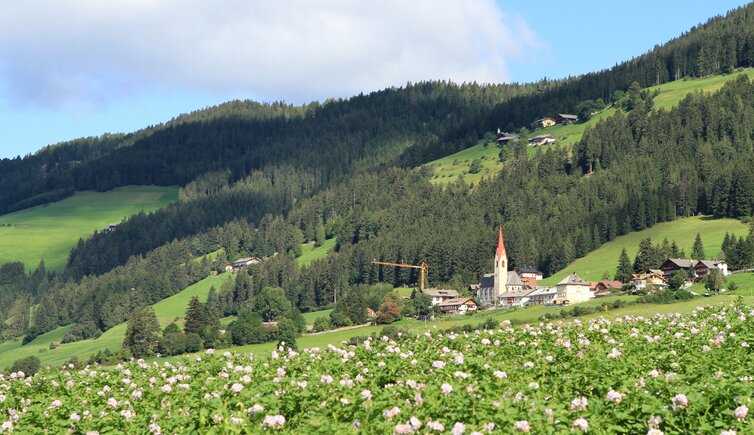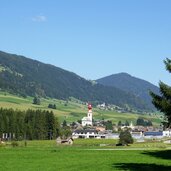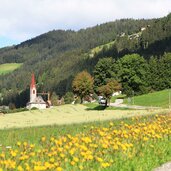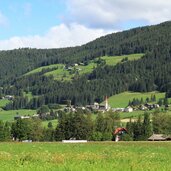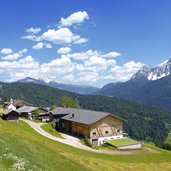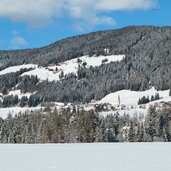The oldest Marian pilgrimage in the Upper Val Pusteria leads to Santa Maria, the sunny village on the valley slope above Dobbiaco
Image gallery: Santa Maria
Due to the construction of the Riggertal loop and safety-related works, sections of the Val Pusteria Railway will be closed until January 2026. A rail replacement bus service will be in operation.
The three main… read more
It is 1333 AD and Santa Maria (Aufkirchen) is mentioned for the first time as a place of pilgrimage. Here, indulgences are granted, pilgrims are welcomed and the Friday of Sorrows is celebrated in a big way, which helps Santa Maria to a real heyday already in the 15th century. In 1470, the little church became too small and a Gothic church was built around the expressive image of Our Lady of Sorrows which can be still visited. Today, Santa Maria is a sunny place with few houses clustered around the pretty church. A little further above it rises the St. Peter Chapel.
It also deserves a few lines, because St. Peter am Kofel is one of the oldest religious shrines in the Upper Val Pusteria. The contemplation stations that lead up there from Santa Maria consist of granite blocks with bronze reliefs showing scenes from the life of St. Peter the Apostle. Afterwards you come to the little church in the forest, which radiates a very special atmosphere. It was abandoned for a long time before it was renovated and reopened a few decades ago.
The proximity to Dobbiaco and the location on the valley slope make Santa Maria a quiet holiday destination. Shortly before Dobbiaco village, the road leads up to the mountain village. The public transport network connects it with the shopping, sports and cultural facilities of Dobbiaco. In winter, when Santa Maria is covered in glistening powder snow, the Rienza Ski Centre opens its two slopes near Lake Dobbiaco. It is connected to the 3 Zinnen Dolomites Ski Resort, which stretches across the Valle di Braies valley to Dobbiaco, and then on to San Candido and Sesto.
